Multiplying up to Three Digits Using the Standard Algorithm—Let's Practice!
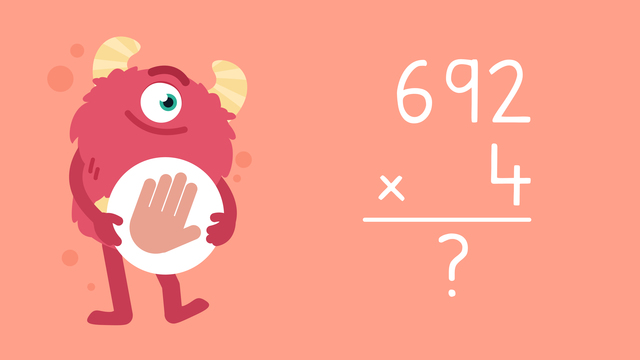

Basics on the topic Multiplying up to Three Digits Using the Standard Algorithm—Let's Practice!
Today we are multiplying up to three digits using the standard algorithm with Razzi! This video contains examples to help you further practice and grow confident in this topic.
Transcript Multiplying up to Three Digits Using the Standard Algorithm—Let's Practice!
Razzi says get these items ready (...) Because today we're going to practice... Multiplying up to Three Digits Using the Standard Algorithm. It's time to begin! Solve each multiplication equation using the standard algorithm. Starting with, thirty-eight times eight. Pause the video to work on the problem (...) and press play when you are ready to see the solution! Eight times eight is (...) sixty-four... so put four in the ones place, and regroup the six HERE. Eight times three is (...) twenty-four. Last, add twenty-four and six which equals thirty. Did you also get three hundred four? Let's try one more! Solve six hundred ninety-two times four. Pause the video to work on the problem (...) and press play when you are ready to see the solution! Four times two equals (...) eight... Four times nine equals (...) thirty-six... so put the six in the TENS place, and regroup the three HERE. Four times six equals (...) twenty-four. Last, add twenty-four and three which equals (...) twenty-seven. Did you also get two thousand seven hundred sixty-eight? Razzi had so much fun practicing with you today! See you next time!
Multiplying up to Three Digits Using the Standard Algorithm—Let's Practice! exercise
-
What are the two simple steps to find the answer when multiplying two numbers?
Hints5 x 7
Is this on the left or right?
Continue with 5 x 2.
Finally, combine the results together to find the final answer.
SolutionMultiply each digit of the bottom number by each digit of the top number, starting from the right.
Add up all the results to find the final answer.
-
Solve the multiplication problem.
HintsBegin by focusing on the individual digits of each number, starting from the right.
Start with 5 x 8.
Remember, if the answer is bigger than 9, we put the extra ones in the tens place.
So, when we do 5 x 8, we get 40.
We write down 0 in the ones place and put 4 in the tens place.
After completing the multiplication for each pair of digits, sum up the results to obtain the final answer.
Solution38 x 5 = ?
5 x 8 = 40
Put 0 in the ones place, and regroup the 4 with the tens.
5 x 3 = 15
15 + 4 = 19
38 x 5 = 190
-
What is 46 x 8 ?
HintsBegin by multiplying the ones place of the bottom factor (8) by the ones place of the top factor (6).
If the product of the ones place is greater than 9, regroup the extra tens to the next place value.
After regrouping, multiply the ones place of the bottom factor (8) by the tens place of the top factor (4).
Remember to add the regrouped tens to this product to get the final result for the tens place.
Solution46 x 8 = 368
1.8 x 6 = 48
2.Put eight in the ones place, and regroup the four with the tens.
3.8 x 4 = 32
4.32 + 4 = 36
-
What is 438 x 3?
HintsStart by multiplying the bottom factor (3) by the ones place of the top factor (8).
Remember to carry over if needed.
Then continue with the tens place (3 times 3).
Finally, do the multiplication for the number in the hundreds place, (3 x 4).
Solution3 times 8 is 24, so write 4 in the ones place and carry over 2.
3 times 3 is 9.
9 + 2 = 11. We write 1 in the tens place and carry over 1.
3 times 4 is 12, but we need to account for the carried-over 1 from the previous step.
3 times 4 plus 1 is 13.
So, the product of 438 × 3 is 1,314.
-
Can you solve the multiplication?
HintsMultiply the bottom factor (9) by the ones place of the top factor (3) to get the result for the ones place.
Multiply the bottom factor (9) by the tens place of the top factor (1) to get the result for the tens place, and then combine the results for the final answer.
Solution13 x 9 = 117
1.9 x 3 = 27
2.9 x 1 = 9
3.9 + 2 = 11
-
Solve the different multiplication problems.
HintsFocus on one number sentence at a time.
Use the standard multiplication algorithm for each sentence, starting with the ones place.
Pay attention to regrouping if the product is greater than 9 in any step.
Solution324 x 6 = 1,944
58 x 7 = 406
338 x 4 = 1,352
96 x 6 = 576
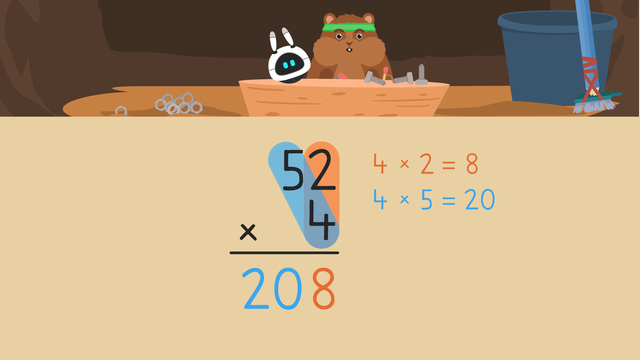
Multiplying up to Three Digits Using the Standard Algorithm

Multiplying up to Three Digits Using the Standard Algorithm—Let's Practice!
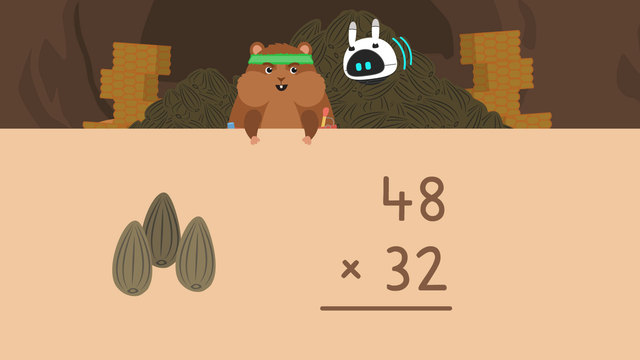
Multiplying Two-Digit Numbers by Two-Digit Numbers
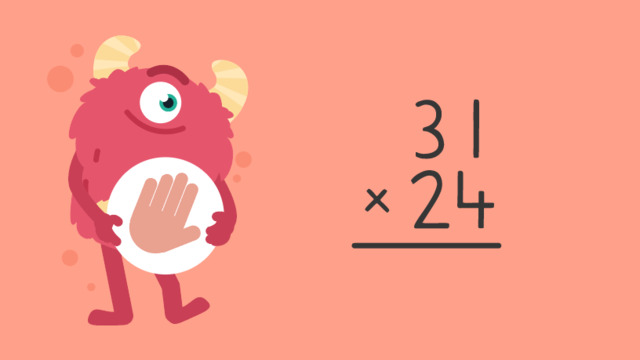
Multiplying Two-digit Numbers by Two-digit Numbers — Let's Practice!
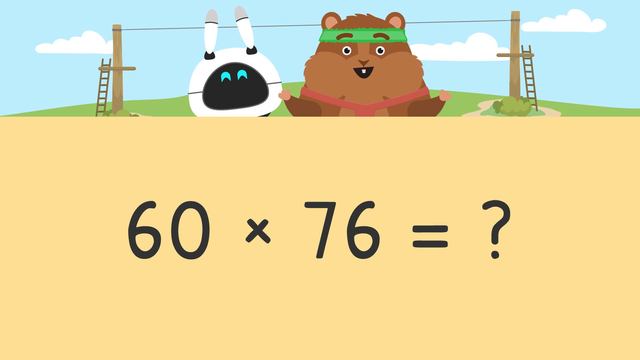
Multiplying 2-Digit Numbers by Multiplies of 10
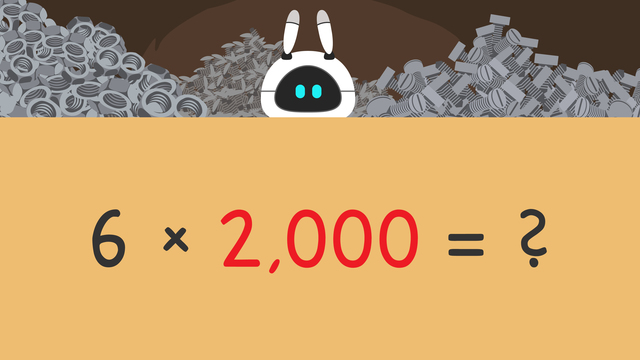
Multiplying Tens, Hundreds and Thousands
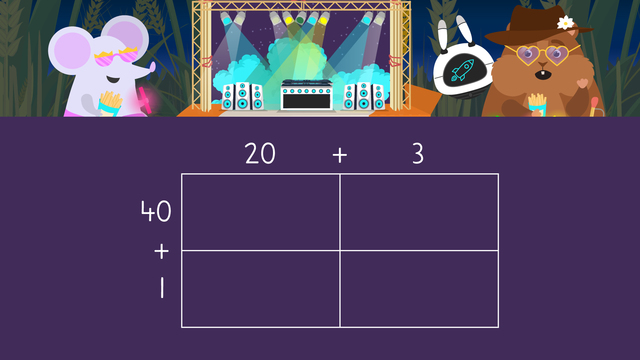
Multiplying Two-Digit Numbers by Two-Digit Numbers Using an Area Model
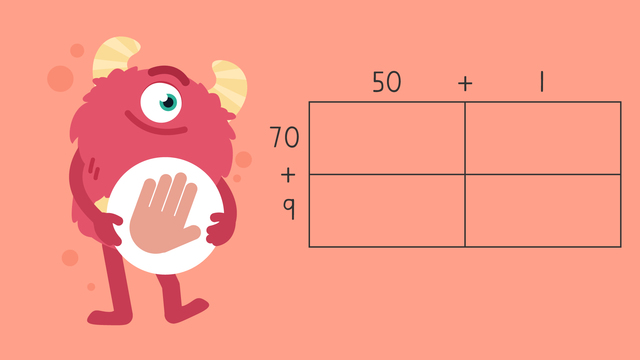
Multiplying Two-Digit Numbers by Two-Digit Numbers Using an Area Model—Let's Practice












This is a interesting :)